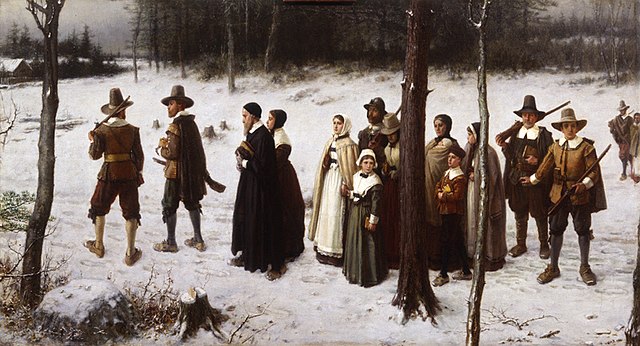I found it really quite interesting and often enlightening to consider Marilynne Robinson’s various name choices in her Gilead trilogy (that is – to date, trilogy!), and seeking out hidden meanings and symbolic. And they are certainly there aplenty; first and foremost, Gilead, that biblical place offering balm for souls searching, and in the names of siblings and children – all those Johns and Edwards, and Glory and Grace. Not immediately apparent to me was the significance one could give to the two family names. It must be said, Robinson could of course have chosen them from the recesses of her mind, or even at random! But anyway for what it’s worth…
WILLIAM AMES (1576-1633)

by William Marshall
line engraving, published 1633
NPG D9511
© National Portrait Gallery, London
William Ames was an important Protestant theologian, educated at Christ’s College, Cambridge, who by and by fell afoul of the clerical elite with his rigid Calvinist and staunch Puritan views (can said points of view be anything else but?), and specifically in relation to the debauchery and excesses (again, to his mind) surrounding the Twelve Days of Christmas. Persona non-grata on the island it then seems, he travelled to the Netherlands, and initially courted again controversy – this time with a dispute to do with the Arminian position of predestination. Nevertheless, he obtained important university teaching positions, and his person and writings were to become influential in reformed theological circles in Holland, and flourished across the Atlantic in the fledgling New England colony (where he had hoped to go before being hindered by ill health) and the purity of faith embraced there.
Jonathan Edwards (1703-1758)

Probably the most prominent American theologian, Jonathan Edwards‘ fusion of Calvinism and Puritanism became one of the defining aspects of American protestantism, especially through the Great Awakening and Revival Theology period of the mid-eighteenth century, and his influence and legacy remain to this day theologically pertinent, and absolute to an understanding of American colonial history (see all things Perry Miller.)
GEORGE HENRY BOUGHTON (1833-1905)

A bit of a stretch – but anyway. George Henry Boughton was born in Norwich in England but grew up in Albany, New York. No learned man of church and theology here, Boughton was a painter and illustrator! The subject matter of his work though was very often drawn from New England colonial history, and per se therefore often representing Puritan life.
With my thoughts on Lila Ames I included an image from George Henry Boughton, and here is another that may very well be seen as representative of Lila’s quest for the grace and salvation that the Rev. John Ames believes and preaches.
Interestingly, Boughton also illustrated the 1881 edition of Nathaniel Hawthorne’s The Scarlet Letter, and when I think of Lila, I can’t help but think of Hester Prynne and the inner dignity and strength that they share, enabling them to surmount extreme denigration and hardship.

